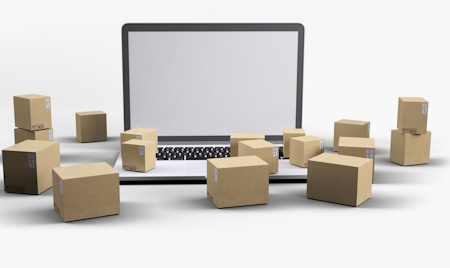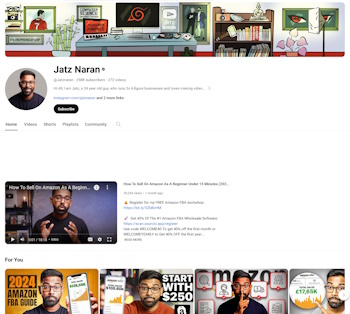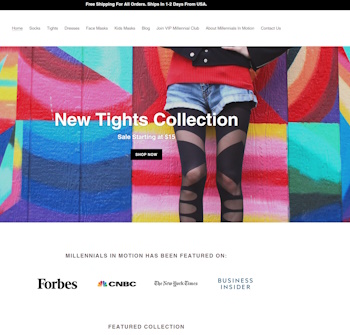Amazon Sellers- Their Business Models

Here at Jasonera we are not too hyped when we look at how someone did something - especially Amazon Sellers.
Why?
Because usually how people got started is now not the same for you. They had different methods, techniques and small ideas and procedures which they have forgot. Remember article marketing? Did well back in the day, not so much now (especially then you can create an article at 400 words).
But this is slightly different. Their business models. What are they doing on Amazon and how did they get to that stage?
The main take away?
You will find that they chose an idea and found a way to scale it. So they scale:
- products posted and sold
- brand
- people to work on the business
But first you need to figure out all the small prints. You need to figure out how to sell one product. Once you have done that then selling more of the same product will introduce more learning curves.
This post has been inspired from https://www.businessinsider.com/start-ecommerce-company-on-budget-strategies-earn-money-selling-amazon-2024-1
Amazon sellers 1: Sahaj Dhingra
Sahaj did what people call arbitrage. He took something from one place and then moved it to another place, usually to sell at a higher margin.
So when people ask, what did you sell on Amazon? Sahaj answered Costco items. He bought Costco items that were slightly cheaper and sold them on Amazon for a profit. In this case he bought when the product sold. Keeping a very lean inventory- reducing costs/ storage. This is called Fulfillment by Merchant rather than Fulfillment by Amazon- where you need to send the products to Amazon- incurring storage fees and would question even if the product would move.
This method has positive and negatives:
- the products are good and sell- Costco has a good reputation and they would only stock items that sold anyway with good reviews
- items were chosen with the idea that Costco would always sell them
- knowing inventory levels and items that were selling you can scour like products that would be more expensive but have a larger mark-up
- Sahaj had 50 products- meaning that 1 or 2 products won't be a good arbitrage
- it is risky because you are betting that you will sell items, you are assuming that the source is going to be OK. You are assuming as well that the sources products are 100% fine with no call backs
- all the profits went back into buying more product
At the end of the day it worked. $100,000 in 3 months.
Amazon sellers 2: Jatin Naran

We have come across Jatin before in our FBA reviews which you can find here. (unfortunately some of his videos are not playable) .
Jatin uses direct buying. But first you must figure out what is selling. Once you figured that out you go to the main profit centre. In this Jatin goes to the manufacturer and opens a merchant account. This way Jatin deals directly with the manufacturer and not the middleman.
Brands/ manufacturers can be iffy though. Sometimes they want:
- business details- like business accounts
- where will you be selling the items. Some ban places, and other might already have an online presence
- there is a minimum buy amount
- they don't want email conversation, many want face to face or phone conversations
The best way through this is a proven track record. If you can prove to a manufacturer that you can sell more and show them proof then they will be more eager to work with you. The best are the ones that have a low online presence- or do but are not on Amazon. This is where you can thrive.
Amazon sellers 3: Shan Shan Fu

Selling socks. Easy right? Well it can be but again if done right.
Shan Shan Fu started selling on Etsy because it was cheaper than Amazon (where you have to bar-code everything). Then she realised that if products were selling on Etsy would they also sell on Amazon? And they do- so another sales channel was born.
First she find products selling well and then checks through Helium10 on how that item would do on Amazon- which roughly gives keyword searches and competitors. But, this needs to be done on each product- or type of product that she wants to introduce to Amazon. Obviously higher search and less competition the better.
After she has found the item she then searches for a factories that make it (usually through Alibaba). Orders the smallest samples for photos and to check the quality. She find a couple of manufacturers and asks multiple amount of questions.
Once the product has been sourced then she sells them on Etsy- also selling different versions of the product. She checks the stats- click throughs, buys etc and then the top 4 go onto Amazon.
Obviously there are risks. You can get lumbered with a ton of stock that might not sell. And the super main one? Supply- making sure you have a regular supply of product that is actually selling.
- Shan Shan Fu has a website: https://millennialshops.com/ (Millennial's in Motion)
- which is also geared around Insta
- it has multiple badges/ logos of trust from national brands
- initially it was selling masks through COVID then branched to socks, dresses, jeans etc
- theres an email signup- with a discount of purchases
Check out other online selling articles on the Jasonera blog.
Amazon FBA? Check out our articles here.
Want to get higher in Amazon search? Check out our guide to Amazon Sales Rank here.
Affiliate Product Secrets: Maximize Your Earnings
Increase Your Revenue with Step By Step Strategies
About. Updates. Disclaimer. Privacy. Mission/ Vision. FAQ
Copyright © 2024- Jasonera.com All rights reserved




